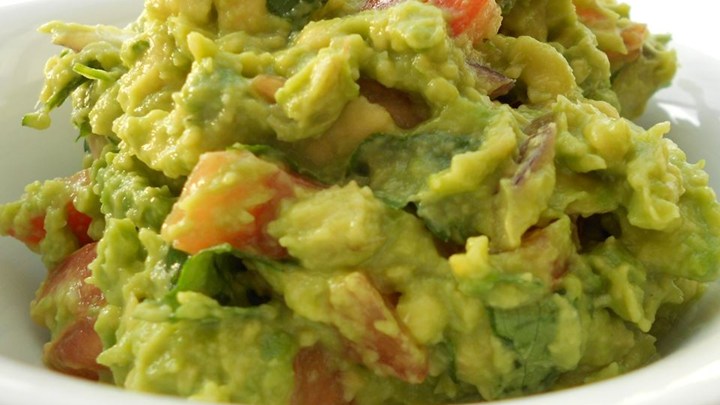| siha yako |
Meet your mitochondria. With a laundry list of responsibilities ranging from creating energy to determining the time of a cell’s death, mitochondria have increasingly become the focus of chronic disease research. The keeper of our mitochondria is our thyroid hormone. This is why, when thyroid hormone is deficient or poorly functioning, patients experience an array of symptoms, including fatigue, constipation, hair loss, depression, foggy thinking, cold body temperature, low metabolism, and muscle aches.
How much of what we call “mental illness” is actually thyroid-driven? In my experience, a vast majority, and certainly enough of a subset to warrant a more sophisticated appreciation for proper diagnosis and treatment in these patients. Thyroid health is so much more than pumping out a hormonal product. It is a sophisticated conversation between the brain, gland, hormones, and the receiving cells and tissues.
This circuitry is at the mercy of yet another hormone, cortisol, produced by your adrenal glands, signaled by your brain. This is why hypothyroidism can also look like anxiety, palpitations, insomnia, and sweating, and why one person may feel restored on thyroid hormone and another decimated.
Once we ask about the state of adrenal function, we have to dig a step deeper and ask what is taxing the adrenals. From this point of inquiry, we are typically talking about the gut, diet, and environmental immune provocation. This is the model of medicine that prizes root-causes, considerations like gluten enteropathy, sugar imbalance, fluoride toxicity, and iodine deficiency as potential drivers of thyroid hypofunction. The many lifestyles and environmental factors that can influence this relationship are prime examples of the web-like, whole mind-body approach that medicine must take in an effort to truly reverse pathology.
When patients are tested for thyroid pathology, typically at their own request, they are often confronted with “reference range” rejection - physicians staring at numbers instead of the suffering humans before them. Reference ranges that bracket your lab results are based on unscreened and clinically unassessed populations (many were active hypothyroid patients), never calibrated for diagnostic practice. Doctors are trained to look at a brain hormone TSH as an absolute indicator of whether or not a patient is living in a glandular hormonal deficiency state.
Dysfunction of the endocrine system at large is totally ignored by this metric that “diagnoses” only the lowest 2.5 percent of those in a given reference range, as hypothyroid, without looking at the whole picture of their hormone activity. There is also neglect for the significance of antibodies as a relevant indicator of endocrine-immune dynamics, and consideration of autoimmune drivers.
For those who do receive the label of hypothyroid, they remain obliquely objectified by their lab work as their doctors use synthetic T4-Synthroid to attempt to move their TSH within range, more often leaving them symptomatic but “treated” because of poor conversion to active thyroid hormone (T3) and suppression of natural T3 production because of their now lower TSH.
When patients are denied appropriate hormonal treatment, it can be a slippery slope to medications for their remaining symptoms, and one category of medications in particular - psychiatric. Psychiatry is often positioned to slap Band-Aids on the festering unwashed wounds of the population. When these patients are told that they are “fine” or “treated” but they continue to feel unwell, they are sent to a psychiatrist or started on psychotropics by a nonspecialist. Are many psych patients actual thyroid patients?
The literature seems to suggest as much, particularly in pregnant women. An important premise, however, is that there is likely gross under diagnosis taking place in the literature secondary to use of a single metric TSH. This reflects what functional medicine and naturopathy have claimed for years that immune dysregulation is the key factor in thyroid hypofunction, and may predate actual change in hormone production by up to seven years. The role of thyroid in brain health has been the subject of speculation for over a century.
In the case of depression, there is much dispute as to the significance of hypothyroidism in presentations of classical and treatment resistant cases. Estimates of “subclinical hypothyroidism” where free hormones are low, but TSH is normal, are up to 52 percent in the resistant population, which is demonstrative of the importance of looking beyond TSH.
The specific suppression of free T3 levels in depressed patients has been evaluated in several studies including those which specifically identified poor conversion of T4 to T3 in depressed women who were less likely to improve with standard medication treatments. In 10 years after initial hospital admission, those with evidence of thyroid dysfunction through a stimulation test (TRH) were significantly more likely to relapse. Antibodies to thyroid tissue are also present in 20 percent of depressed patients, as compared to 5-10 percent of the general population.
In both bipolar and unipolar depression, there have been six randomized, placebo-controlled trials conducted wherein thyroid hormone was used as an augmentation to an incompletely effective antidepressant-tricyclic and found to be effective, particularly in women.
Perhaps the best-studied population when it comes to the predictive role of thyroid abnormalities, pregnant and postpartum women deserve the most vigilant screening. Of 31 inpatient women with a diagnosis of postpartum psychosis, 19 percent had detectable thyroid autoantibodies and 67 percent of these women developed thyroid dysfunction by six months as compared to 20 percent in the controls. TSH at delivery has been shown to be a predictor of postpartum depression at six months postpartum. Even in the setting of “normal” TSH levels, thyroid autoantibodies are predictive of postpartum depression and anger including in prospective trials.
Risks of hypothyroidism include adverse pregnancy outcomes such as hemorrhage, preeclampsia, fetal cardiac rhythm anomalies, and labor abnormalities. Thyroid antibodies, once again, represent a significant risk factor, not just for psychiatric pathology but for tripled odds of miscarriage and double of preterm birth. Importantly, in one randomized, placebo-controlled trial, supplementation with 200 micrograms (mcg) of selenium during pregnancy reduced antibody activity and improved hormone parameters likely owing to selenium’s antioxidant properties in thyroid tissue.
A randomized, placebo-controlled trial of T4 treatment in bipolar depression showed improvement that was limited, statistically, by high rates of placebo response, and likely the same conversion limitations of using T4 as opposed to a T3 containing preparation. A rational extension of this finding was demonstrated in two studies that found elevated T3 in manic bipolar patients, one noting that patients with bipolar mania relative to controls were 2.55 times as likely to have abnormal free hormone levels.
Feeling like a mental patient? Look out for these offenders. The establishment of a relationship between suboptimal thyroid function and symptoms of mental illness tells us that appropriate and comprehensive screening is vital in this population. It also leads us to ask, why is the thyroid flagging, and what can we do about it. High on my list of causative offenders are:
- Birth control pills: The synthetic hormones in this pharmaceutical product increase thyroid hormone binding globulin, effectively lowering available thyroid hormone even without perturbing lab values.
- Gluten: In addition to its direct effects on the brain through opioid compounds, indirect effects through autoimmune and cytokine stimulation, gluten drives at least two pathologies - celiac and Hashimoto’s - that are significantly associated with depression and other mental illnesses. The prevalence and causative role of gluten in Hashimoto’s Disease (thyroid autoimmunity) have been established. The role of gluten in brain health is of increasing interest, and in celiac patients with thyroid autoantibodies, depression and panic disorder risk are greatly increased.
- Endocrine disruptors: From exposure in utero, industrial and agricultural chemicals such as phthalates, flame retardants, and PCBs are pervasive toxicants that interfere with the hypothalamic pituitary adrenal signaling, stimulating the immune system and derailing hormones.
Historically, fluoride was used, even in the milligram range, to suppress thyroid function in hyperthyroid patients. It interferes with multiple aspects of thyroid tissue integrity, hormone activation, and displacement of iodine, a critical and essential mineral for thyroid function.
For all of the reasons listed above, my top recommendations for anyone experiencing symptoms of mood disturbance are to:
- Clean up your local environment: from personal care products to cleaning agents, water, air, and electromagnetic fields.
- Clean up your diet: eliminate gluten, dairy, GMOs (soy, corn, and vegetable oils), and sugar.
- Clean up your mind: initiate a meditation practice to heal your adrenals and promote anti-inflammatory signaling.
In our fast-paced, technology-smothered, nutrient-depleted, and toxicant-replete lifestyles, your thyroid gland may be the first to come under siege. Recognize the profound significance of treating a thyroid condition with psychotropic medications and choose to go to the root of the problem, first.











